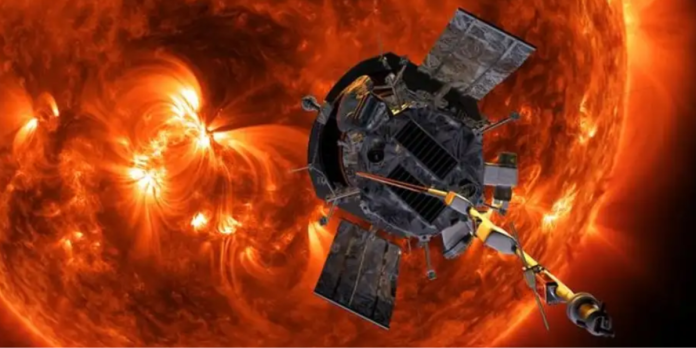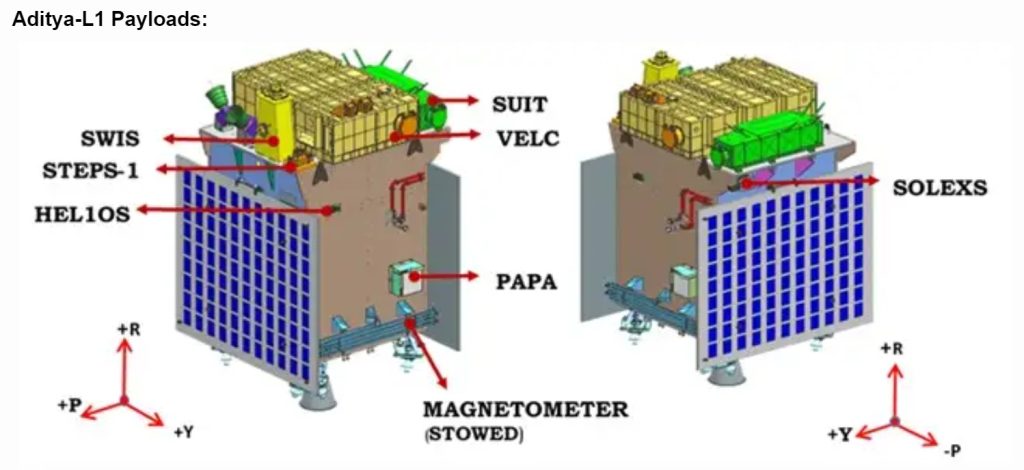
ISRO’s Aditya L1 Mission: Unveiling The Sun’s Secrets From Halo Orbit.
Date:

Share post:
In a remarkable stride towards understanding the universe’s most luminous entity, the Indian Space Research Organisation (ISRO) has unveiled the launch details of the Aditya L1 mission—a pioneering endeavor to study the Sun. This ambitious mission is set to offer unparalleled insights into solar activities and space weather phenomena, marking a significant advancement in India’s space exploration journey.
Aditya L1’s Halo Orbit: A Window to Sun’s Secrets
Positioned at Lagrange point 1 (L1), a staggering 1.5 million kilometers from Earth, the Aditya L1 spacecraft will embrace a halo orbit around the Sun. This strategic vantage point will allow Aditya L1 to continuously observe the Sun without any disruptions caused by occultation or eclipses. This orbit brings forth an unprecedented opportunity to monitor solar activities in real time, enhancing our understanding of the Sun’s dynamic behavior and its influence on space weather.
Payloads Unveiling the Sun’s Mysteries
Aditya L1, the first Indian space-based mission dedicated to studying the Sun, is equipped with a suite of seven payloads. These payloads are meticulously designed to explore various layers of the Sun, including the photosphere, chromosphere, and the enigmatic corona. Through a combination of electromagnetic, particle, and magnetic field detectors, Aditya L1 will unravel the intricacies of these regions, shedding light on phenomena like coronal mass ejections, solar flares, and the dynamics of space weather.
September 2, 2023: Date with the Sun
Mark your calendars for a historic event in India’s space odyssey. On September 2, 2023, at 11:50 AM IST, the Aditya L1 mission is poised for liftoff from Sriharikota. As the countdown commences, anticipation grows for the launch that will send a message of India’s scientific prowess and commitment to unraveling the mysteries of the cosmos.
Also Read: India’s First Female Shattering Glass Ceilings in Engineering
Scientific Goals: Illuminating Solar Enigmas
The scientific objectives of the Aditya L1 mission are comprehensive and far-reaching:
- Solar Atmospheric Dynamics: The mission aims to study the dynamics of the Sun’s upper atmosphere, encompassing the chromosphere and corona. This investigation promises to unveil essential insights into their behavior and interactions.
- Coronal Heating and Phenomena: By investigating chromospheric and coronal heating mechanisms, initiation of coronal mass ejections, and flare activities, Aditya L1 seeks to unravel the physics of the partially ionized plasma and the underlying forces driving solar phenomena.
- In-Situ Particle Studies: Aditya L1 will gather critical data on particle dynamics emanating from the Sun, enabling a deeper comprehension of the Sun’s role in shaping space environments.
- Coronal Physics and Heating Mechanisms: The mission will focus on understanding the intricacies of the solar corona and the mechanisms driving its heating—a longstanding puzzle in solar physics.
- Solar Eruptive Events: Investigating the sequence of processes leading to solar eruptive events, Aditya L1 aims to decode the origins and dynamics of these phenomena.
- Magnetic Field Insights: Aditya L1’s magnetic field detectors will unravel the topology and measurements of magnetic fields in the solar corona, contributing to our understanding of solar dynamics.
- Space Weather Drivers: The mission intends to identify and comprehend the composition, origin, and dynamics of solar wind—an integral driver of space weather.

The Aditya L1 mission represents India’s relentless pursuit of scientific excellence and technological advancement. By unraveling the Sun’s mysteries, this mission is set to deepen our understanding of the universe while enhancing India’s global stature in space exploration.
Also Read: Transforming Agriculture Waste into Sustainable Eco-Friendly Batteries
